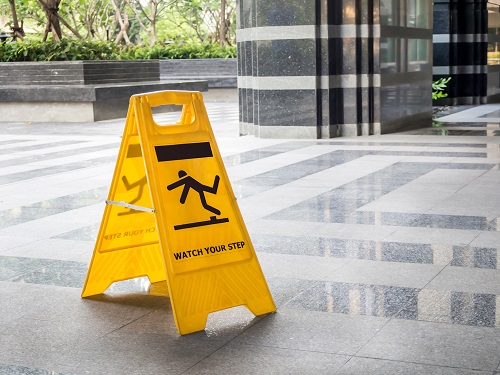 With inclement weather now upon us, the potential for slips and falls has increased. Rain and snow, even in small amounts, create hazards for anyone who is traveling on foot. During the months when rain and/or snow is more prevalent, everyone should be extra cautious of the where they are walking.
With inclement weather now upon us, the potential for slips and falls has increased. Rain and snow, even in small amounts, create hazards for anyone who is traveling on foot. During the months when rain and/or snow is more prevalent, everyone should be extra cautious of the where they are walking.
While no one wants to be involved in a slip and fall accident, knowing the basics of how to fall safely may help to minimize injury in the unfortunate case of a fall. In the event of a slip or trip that leads to a fall, you may want to follow these tips to help protect yourself:
- The main focus should be on protecting the head from injury. This can be done by tucking your chin and raising your arms and wrapping them around your head to protect it from impact.
- Keeping your arms and legs bent at an angle can help protect them if you fall. Landing on your out stretched arms could cause injury.
- Attempt to land in a way where the muscular parts of your body (back, buttocks, or thighs) impact the ground first. This may help absorb some of the force of the fall and prevent skeletal injury.
- Try to stay loose when you fall, tense muscles do not absorb the force of a fall well.
Falling safely is not an exact science; these considerations listed above may help in the case of a fall, however, the best thing to do is prevent slips and falls from happening in the first place. Keeping walking surfaces dry will help to prevent slipping hazards. If an area of the workplace is beginning to show signs of slipping hazards, it should be evaluated for how to best increase traction on the walking surface. This may be through the use of cleaning, surface treatments, rugs, walk-off mats, etc. Employees responsible for workplace safety should review their agency’s policies in regards to managing walking surface hazards and determine the best course of action to keep the agency’s employees safe at all times.
If you have any questions, please feel free to contact PRISM Risk Control.